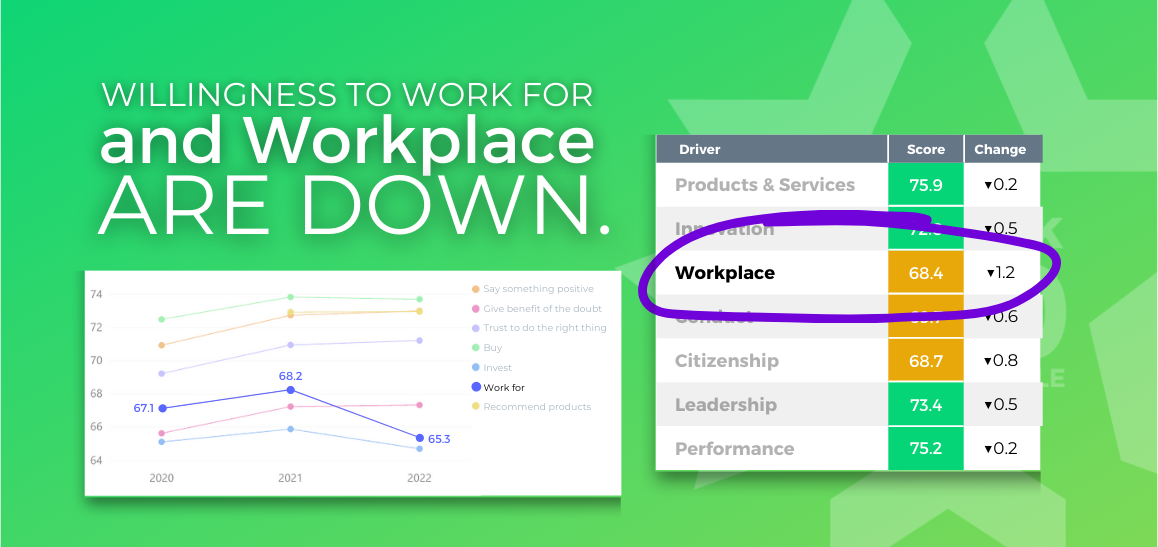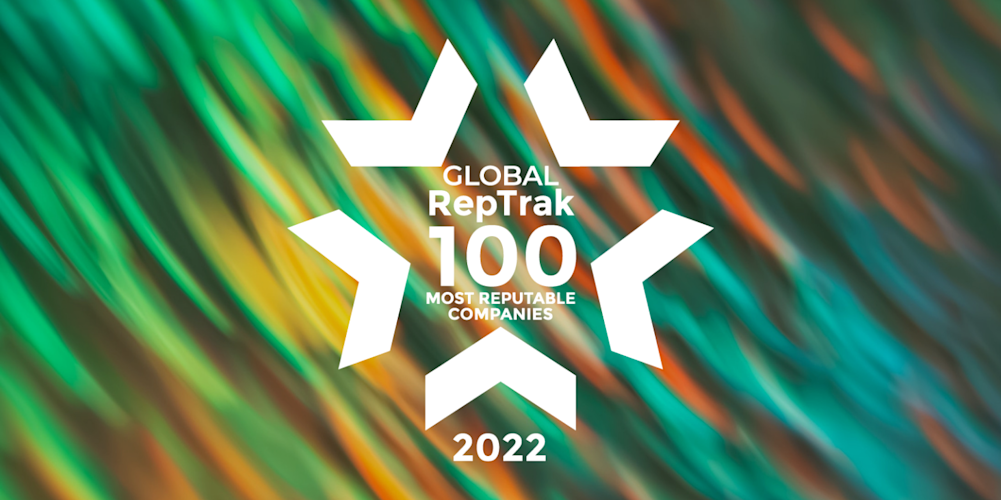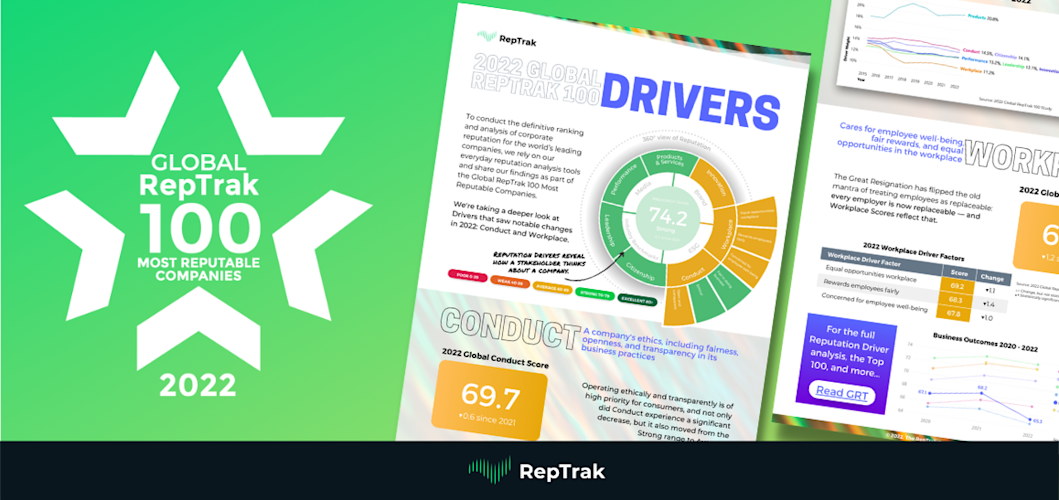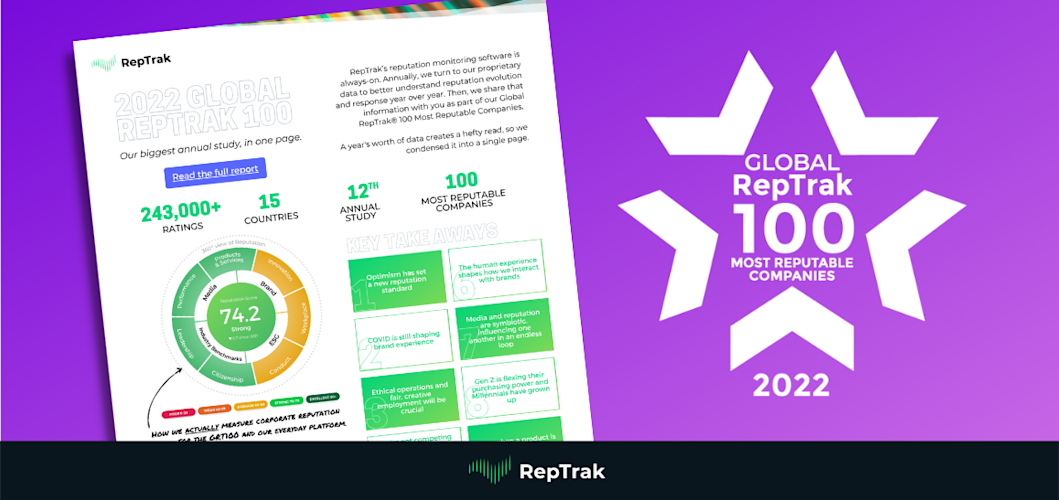The Employment Reputation Reckoning of 2022
Corporate Reputation27 Apr, 2022
The Great Resignation is no longer just a cautionary tale, it's reality — and it's impacting reputation.
The Global RepTrak® 100 (GRT) is the definitive ranking and analysis of corporate reputation for the world’s leading companies, showcasing how people feel, think, and act towards companies globally.
GRT 2021 was optimistic. In 2022, reality set in and brought reputation down with it, from 74.9 in 2021 to 74.2 in 2022. A 0.7 point decrease might not seem too bad, but historical RepTrak data shows a 1-point drop often results in a 4-5% drop in support.
READ THE FULL 2022 GRT100 FOR THE TOP 100 MOST REPUTABLE COMPANIES AND MORE
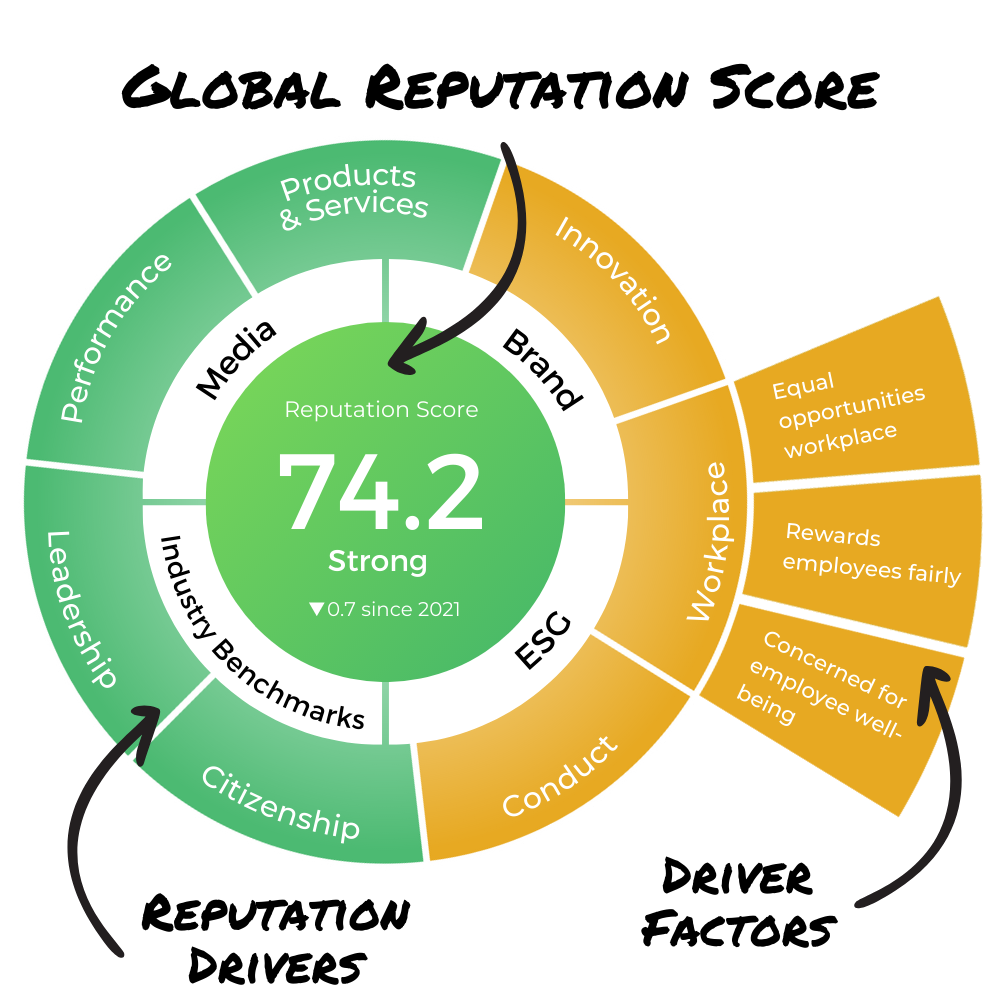
With global Reputation Scores down, we turn to our individual Reputation Drivers to understand why and how global Reputation Scores fluctuated.
These Reputation Drivers reveal how a stakeholder thinks about a company — encompassing what the public typically considers when formulating and interpreting reputation.
Amongst these is Workplace, a measurement of fair employment practices. As a Driver, Workplace had the lowest Score across Drivers and saw the biggest decrease YoY. We dug further into our data to understand more.
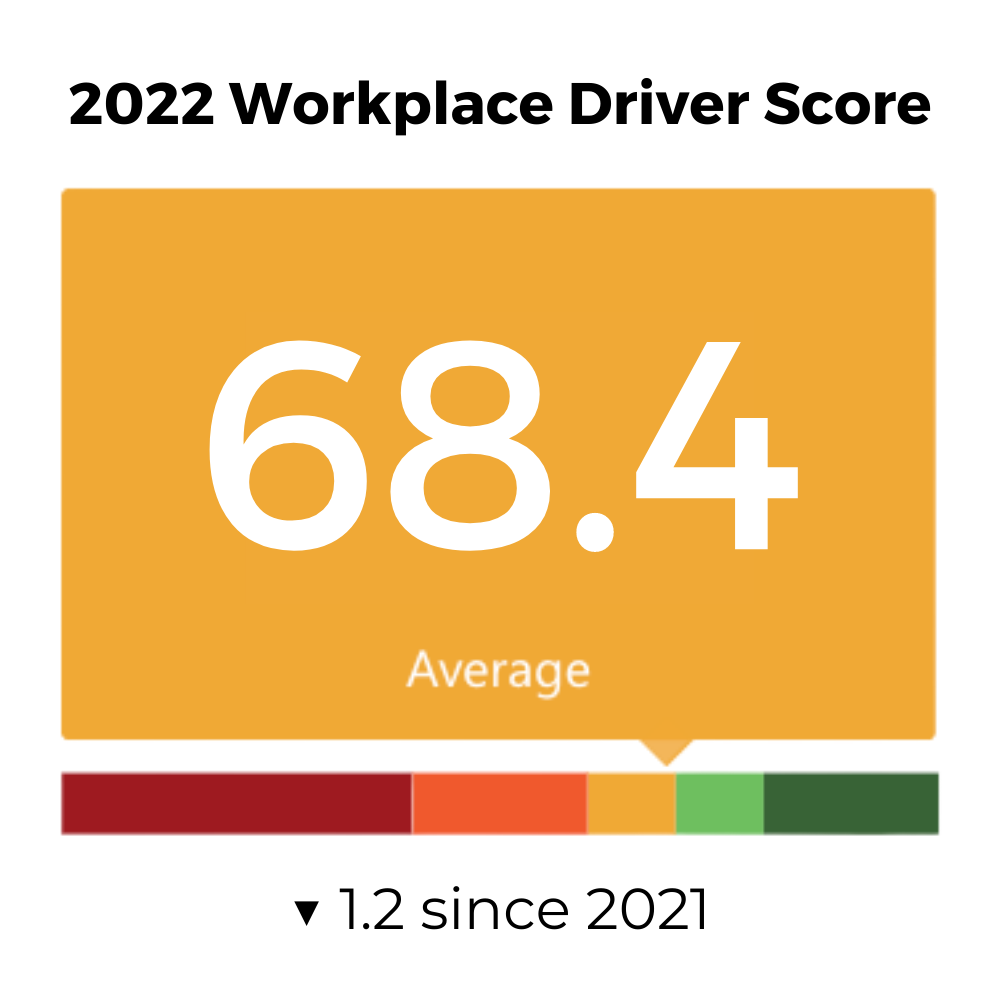
Willingness to Work For
It’s not radical to say we are approaching an employment reckoning. How organizations approached new and novel challenges like the second year of the Pandemic and the health and safety of its employees, collided with older, ongoing conflicts like union-busting and parental leave. The old mantra of treating employees as replaceable has been lifted. The rise of work from- anywhere, unlimited vacation days, and daily updated job boards have flipped the script: every employer is now replaceable.
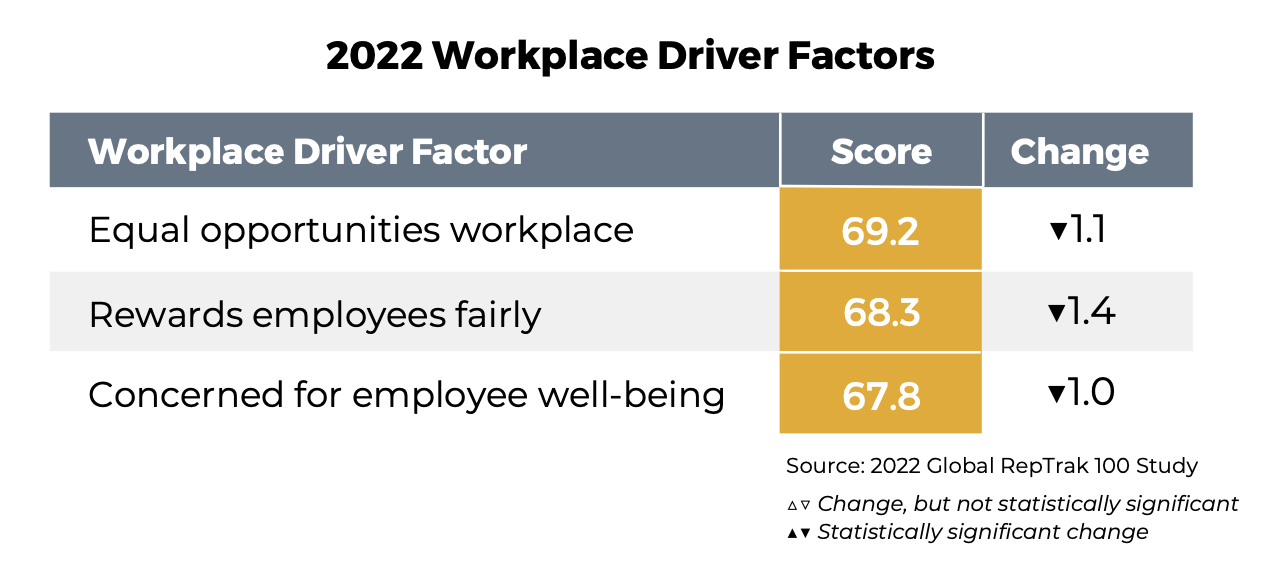
But it’s not just that employers are replaceable, they are under more scrutiny to both jobseekers and consumers. Many have reconsidered their career paths during the pandemic, and their own job search inspires how they buy.
As part of its rich reputation research process, RepTrak also monitors factors like Business Outcomes, studying how reputation impacts how the public reacts to an organization. Amongst those factors is Willingness to Work For.
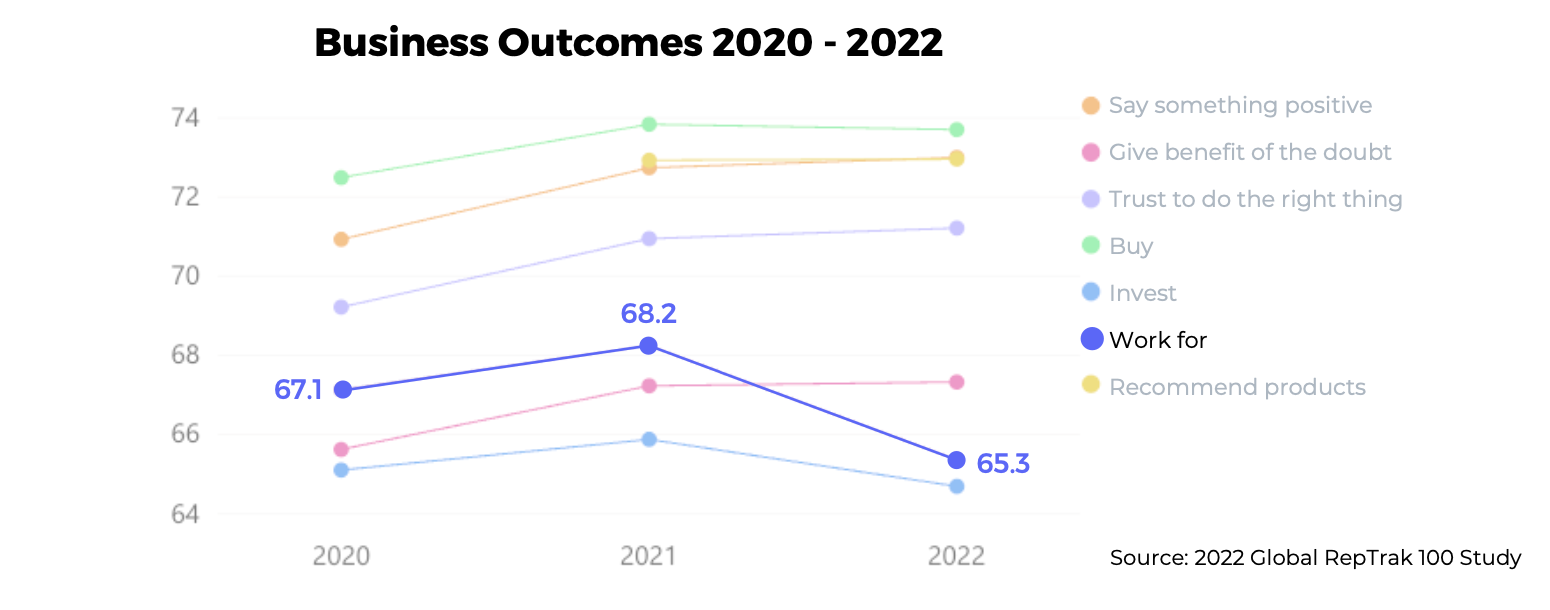
Nearly all Outcomes see a steady increase YoY, except Willingness to Work For. At a 2.9-point YoY difference, the public is communicating that employers are not maintaining their appeal.
Last year, the Willingness to Work For Score peaked. Companies were eager to meet employee needs as working life changed drastically. But now that the “new normal” includes a continuation of some hastily-made Pandemic decisions and sudden retractions, like Return-to-Office, employees are demanding a smoother, more dynamic approach – with higher expectations as illustrated by our Outcomes graph: employees are more disappointed than they were before these perks were even offered.
Employees have become disenchanted, and a lack of Innovation could be to blame.
Workplace innovation
RepTrak’s reputation monitoring software is always-on, so we have a growing database of millions of data points. This luxury allows us to dig even deeper into this Workplace-Innovation phenomena. Historical RepTrak data demonstrates how different Drivers influenced Willingness to Work For. Innovation was uniquely important to enhance the employee experience and attract new talent.
In 2021, Innovation established itself as the most important Driver relative to Willingness to Work For for the first time, improving from third in 2020 and not even included in 2019. In 2019, Products & Services was the most enticing factor relative to Willingness to Work For. But being innovative doesn’t just include what you offer your consumers, it includes being a creative employer.
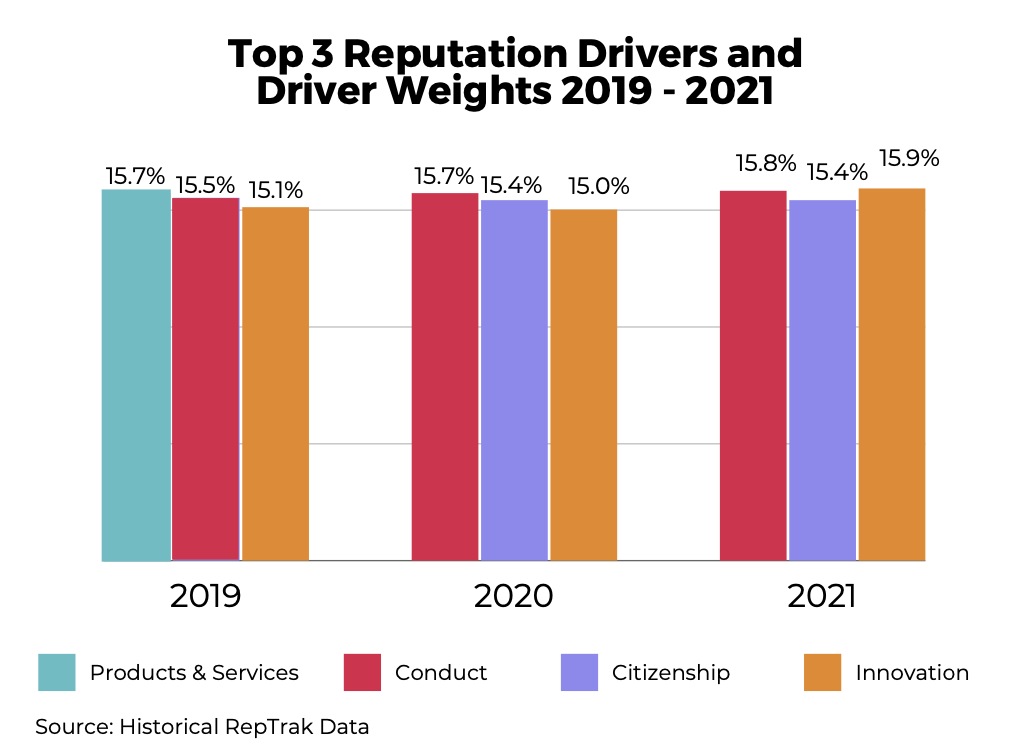
Remote work is no longer novel, it’s an expectation. The pandemic highlighted the contrast in work-life balance, and employees cannot go back. An entirely remote workforce is not realistic for every employer, but more ping pong tables and Zoom happy hours aren’t the answer either.
Doing the “basics” well is an innovative act. Competitive pay, worthwhile benefits, and fair treatment are shockingly avant-garde. When we look deeper at individual Factors that drive Willingness to Work For, we see another Innovation appearance at #1, but Rewards Employees Fairly has risen from #19 in 2019 to #2 in 2021. Concern for Employee Well-being rose from #16 to #7.
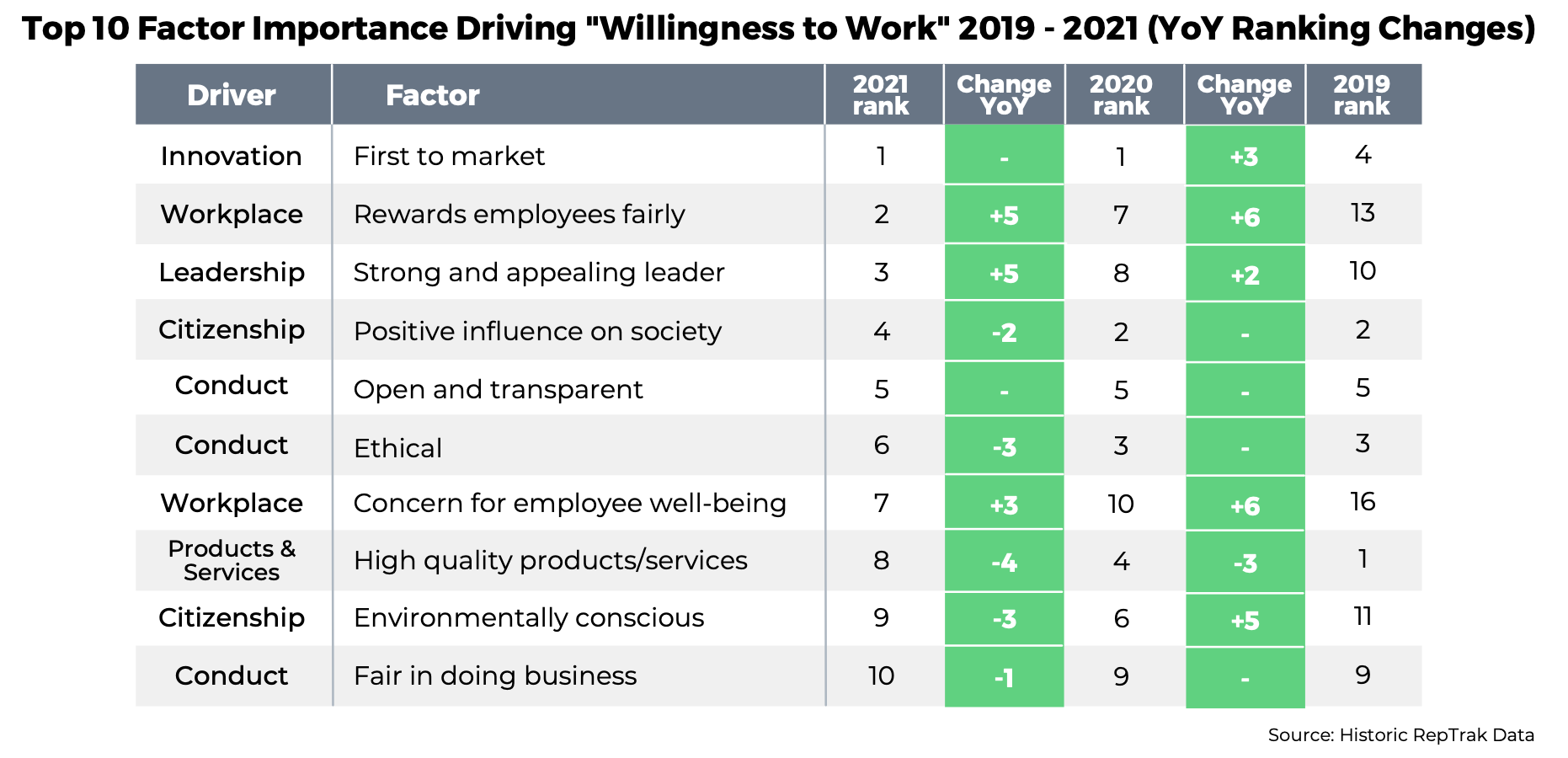
Rewarding employees fairly and practicing concern for employee well-being are about as basic as it gets, and yet the act is innovative and attractive to jobseekers. Throughout the top 10, we see an increase in “warm fuzzies.” The continuing rising importance of ethical practices and impacting society positively reiterate that it’s not just about what you do, it’s about how you do it.
The public is disappointed in the workplaces they purchase from and apply to. In the past, the public has had little insight and power in changing workplaces, but now they might have that influence.
The Great Onboarding follows the Great Resignation. Be prepared.
